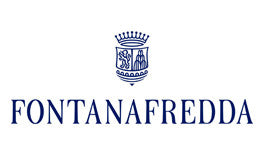Fontanafredda
| Region | Piemonte (Italia) |
|---|---|
| Foundation Year | 1858 |
| Vineyard hectares | 120 |
| Annual production | 7.000.000 |
| Address | Via Alba, 15 - 12050 - Fontanafredda (CN) |

Fontanafredda is one of Italy's most famous wineries with a rich history. It was founded in 1858 and after nearly two centuries, it is still a leading player in the Italian wine world. The estate is located in the Langhe, specifically in the northern area of the municipality of Serralunga d'Alba. The property is centered in the historic village of Fontanafredda, but it covers a total area of 120 hectares, divided into several estates, located in historic wine areas of Piedmont: Serralunga d'Alba, Barolo, Diano d'Alba, Dogliani, Farigliano, Alba and Rodello. Thanks to this multiplicity of terroirs, the winery is able to cultivate each variety in the most suitable place, so that it can always offer wines of excellent quality, although the spearheads of the estate continue to be the prestigious Barolo labels.
The vineyards are all located in beautiful hilly areas, and just to give voice to the rich variety of native Piedmontese grape varieties, the estate grows Nebbiolo, Barbera, Dolcetto, Nascetta, and Timorasso in addition to the international grape varieties Pinot Noir, Chardonnay Riesling and Moscato. The main nucleus of the vineyards, located in Serralunga d'Alba, enjoys a cool, breezy climate with good temperature ranges. The soils are composed of calcareous-clay marls, with the presence of sand and silt. The oldest vines were planted in the 1940s, and for replacements and new plantings we use mass selections, so as to preserve the original genetic material and local typicality. In this way it is possible to maintain continuity in the style of wines, which has distinguished Fontanafredda for centuries.
In 2015, the estate began a process of conversion to organic farming and was certified in 2018. Only sulfur and copper are used in the vineyard, herbicides, pesticides and synthetic fertilizers have been banned. Large wooded areas around the vineyards have also been preserved, so as to maintain a rich environmental biodiversity. The organic choice involves the entire philosophy of the estate, both in the countryside and in the winery. In addition to organic management of the vineyards, the winery follows virtuous practices, both in water management, aimed at minimizing consumption, and in energy production, using renewable sources to reduce environmental impact.